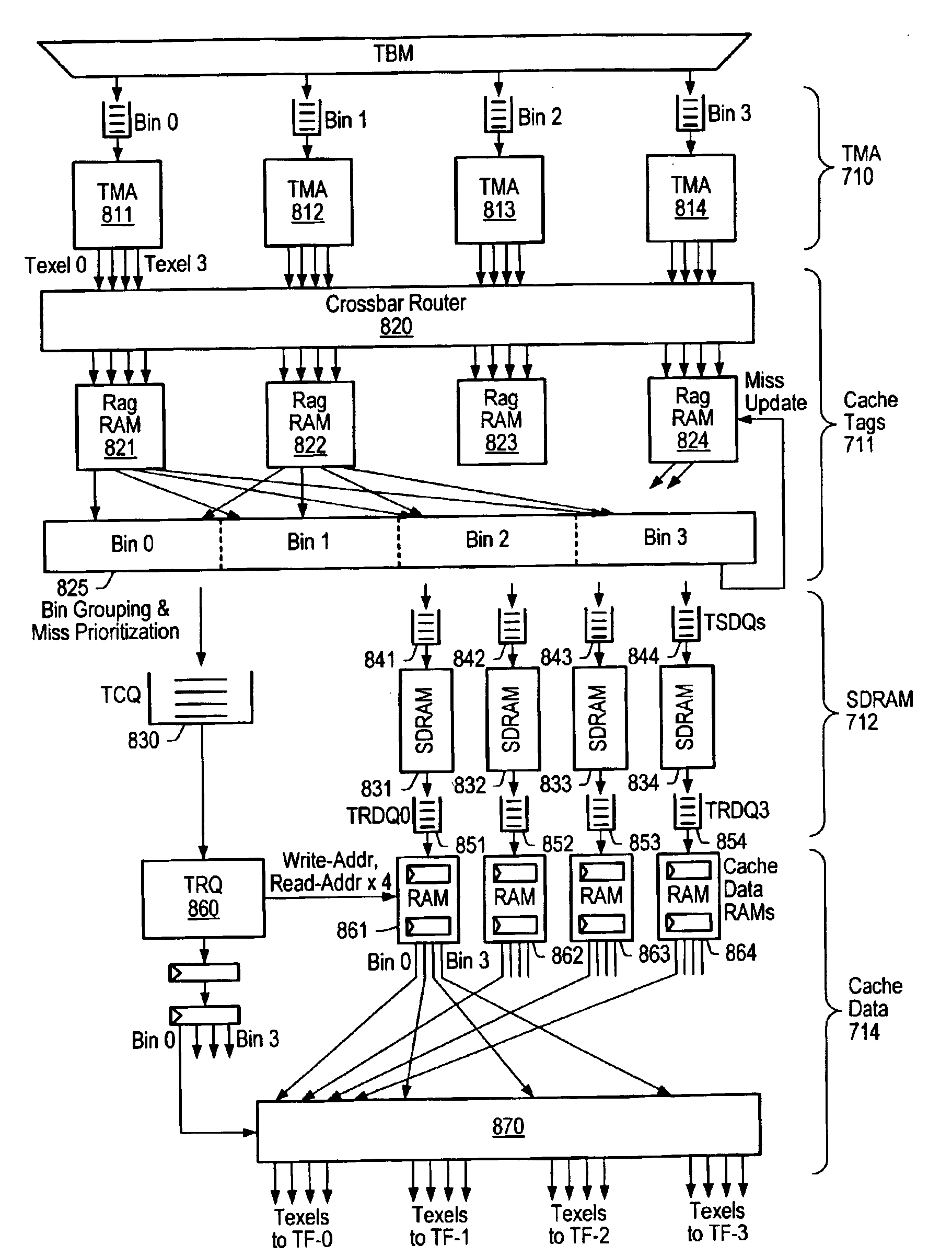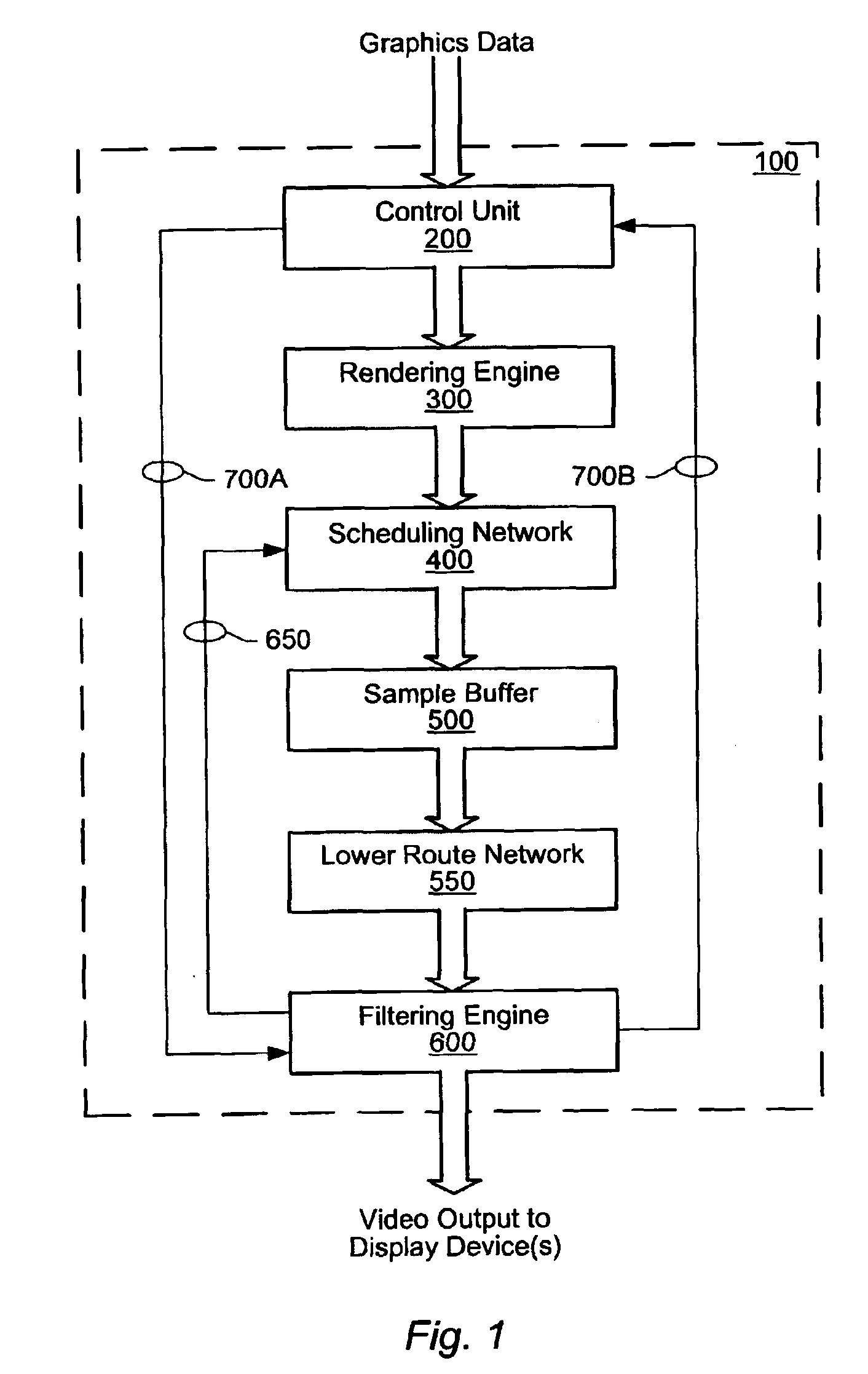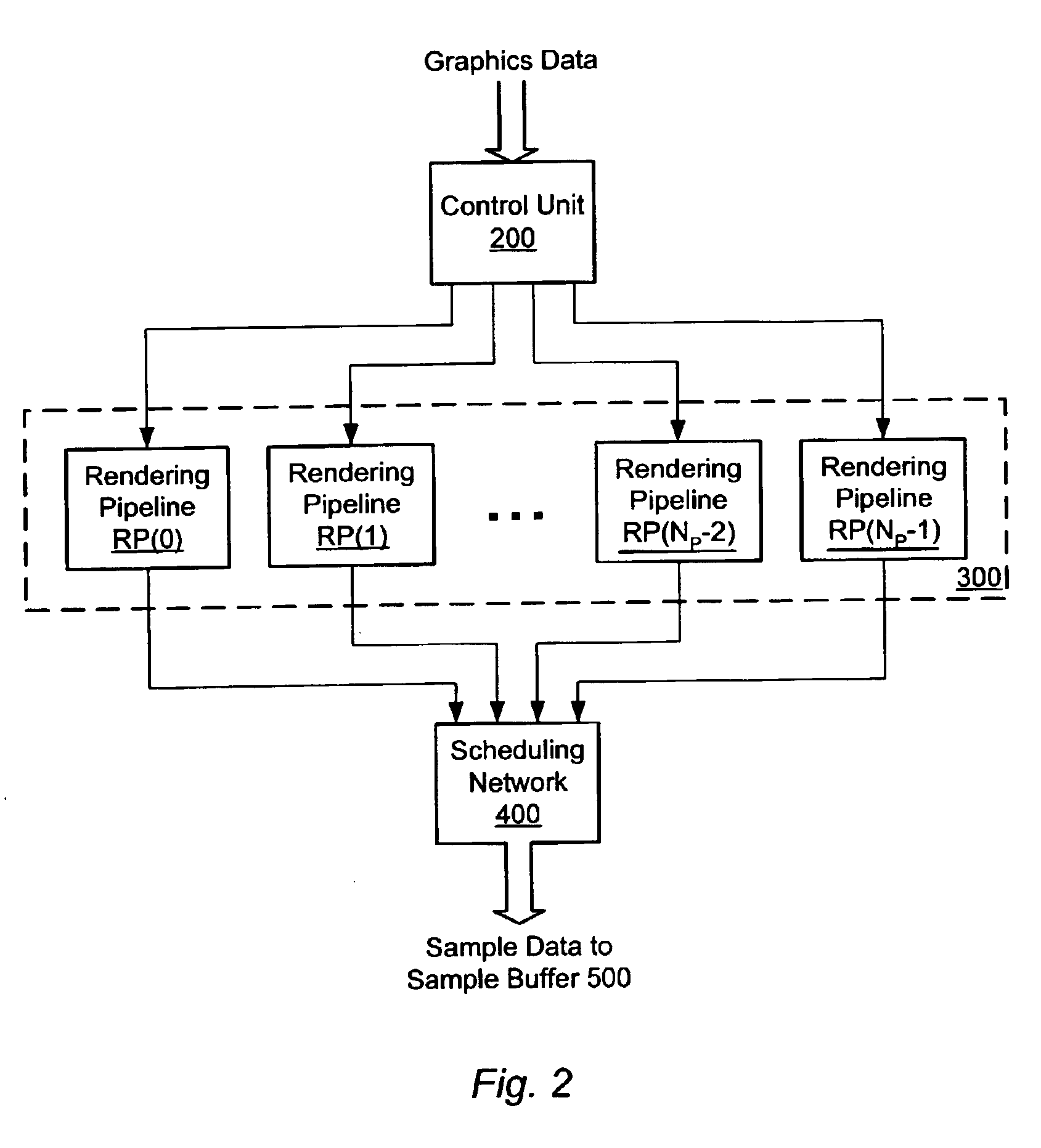Design for a non-blocking cache for texture mapping
a texture mapping and cache design technology, applied in the field of cache design in the graphics system, can solve the problems of increasing the complexity of the image displayed, the complexity of the data being sent to the display device, and the incorporation of graphics processors with a great deal of processing power, and achieve the effect of more availability
- Summary
- Abstract
- Description
- Claims
- Application Information
AI Technical Summary
Benefits of technology
Problems solved by technology
Method used
Image
Examples
Embodiment Construction
[0039]As used herein, “burst length” is used to refer to a number that indicates how many consecutive data bus transfers may be performed in response to a single bus transfer request sent by a host system. For example, if a burst length is four and a memory read operation is performed, there may be four consecutive sets of data transferred on the data bus in response to a single read signal pulse sent by a host system. The size of a set of data for a single transfer over a data bus is typically commensurate with the size of the data bus. Common burst lengths for a DDR SDRAM may include the values of two, four or eight.
[0040]According to prior art, a read operation for a DDR SDRAM may be performed as follows. A DDR SDRAM may receive a Read request through a set of control signals from a requester. A predetermined number of clock cycles after having received the Read request, the DDR SDRAM sends a predetermined number of consecutive strobe signal (DQS) pulses back to the host system. ...
PUM
 Login to View More
Login to View More Abstract
Description
Claims
Application Information
 Login to View More
Login to View More - R&D
- Intellectual Property
- Life Sciences
- Materials
- Tech Scout
- Unparalleled Data Quality
- Higher Quality Content
- 60% Fewer Hallucinations
Browse by: Latest US Patents, China's latest patents, Technical Efficacy Thesaurus, Application Domain, Technology Topic, Popular Technical Reports.
© 2025 PatSnap. All rights reserved.Legal|Privacy policy|Modern Slavery Act Transparency Statement|Sitemap|About US| Contact US: help@patsnap.com



